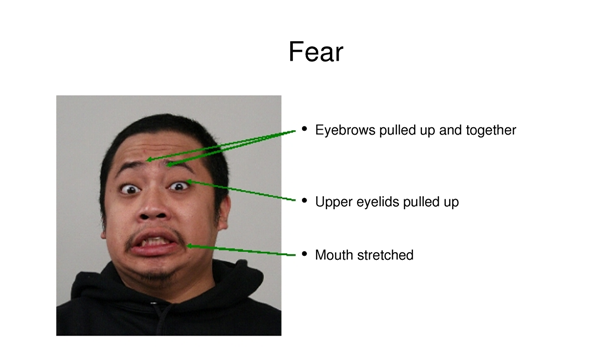One of the biggest misunderstandings about the 7 universal facial expressions of emotion is that people think that means we have only seven emotions. Nothing could be further from the truth.
Yes, facial expressions of anger, contempt, disgust, fear, happiness, sadness and surprise are universally recognized and expressed. But humans have many other types of emotions as well. These include pride, shame, guilt, embarrassment, triumph, worry, hate, love, jealousy – the list of emotions goes on and on.
A dilemma about emotions
This poses a dilemma. On one hand, decades of science have demonstrated that there’s a special category of emotions known as basic emotions. As we have discussed previously, different scholars classify different emotions into their list of what’s “basic.” We use universal, observable, nonverbal signals in the face as our criterion for classifying emotions as basic, which is why we believe there are 7 basic emotions. Other scholars have other approaches. Basic emotions are not necessarily better; they’re just different.
On the other hand, a quick search of emotion words will reveal that there are hundreds of emotion-related words in English. And this is true in all other languages as well. We can relate to all those emotions lists; they’re all important to our everyday social lives.
So how can we reconcile this dilemma?
Well, things are not as disparate as they seem. Most theories of basic emotions suggest that basic emotions (however you define them and whichever emotions you classify as basic) serve as the elemental building blocks for all other emotions that we have in life. There are important differences among these theories, and they have all generally received a lot of scientific support. And they all
serve as the base platform by which other emotions in everyday social life emerge.
The process goes something like this:

- As infants and young children, all humans come to the world with their building blocks of basic emotions.
- As we develop our cognitive skills and engage in a fully social life, with complex social situations, multiple actors and multiple actions, we have emotional reactions that leverage the basic building blocks we start with.
- Because these emotional reactions are occurring in a deeply embedded context, those emotional reactions are linked together to that context, including all of its linguistic and semantic meanings.
Because humans have the amazing capability known as language, we are able to create an emotion word – a label if you will – for these specific cognition-context-emotion combinations. Words, after all, are symbols of things in its world a culture deems important to it. Having these symbols (words) makes communicating about them much easier than without them.
The power of a word
That is, having these specific emotion word labels is really convenient (functional is the more scientific way to say that) because a word reifies a phenomenon in such a way so that we can all talk about it and communicate about it with and to others. Doing so greatly enhances and enables our communications, enhancing our sense of self and ability to coordinate socially with others. Over time, we create many emotion words in a language, but the actual emotions those words symbolize all leverage the same basic building blocks of emotion.
 What about the “emotion wheel”?
What about the “emotion wheel”?
Some people have suggested this process involves a mixing of the basic emotions to create unique emotions, like mixing basic colors of red, yellow and blue on a color wheel. But what I’m talking about is not exactly that.
What we’re talking about is unique cognition-context-emotion combinations, some of which may involve “mixing” or “blending” of multiple emotions, but some may not. This is different than “emotion mixing” like on a color wheel.
Specificity matters
Some emotion words are associated with specific types of contexts and actors. The emotion of “jealousy,” for example, suggests that there are three actors, person A, person B whom person A loves, and person C who is a rival for the affections of person B. Thus, many emotions may be associated with specific types of “scripts,” like scripts for a movie or play.
This thought has led many scholars in the past to create “script theories” of emotions, started by Silvan Tomkins and who many acknowledge as the father of modern emotion science. Script theories are important ways of understanding emotions in society, and thus the number of emotion words we have. But different scripts still leverage the same building blocks of basic emotions (just as blockbuster movies do, by the way).
What about culture and emotion?
Cultures differ in exactly how many words their languages have to refer to emotions. This is because cultures differ in what they believe are important enough to have a word that they can use to refer to a specific cognition-context-emotion combination.
- Some cultures hypercognize about emotions; they create many emotion words.
- Others hypocognize about emotions; they create less emotion words.
For example, scholars have studied and compared 124 or so emotion words in English to similar lists of words in other languages. I understand that Buddhist texts delineate thousands of emotion and emotion-related words. If true, that must mean that the specification of those states was important enough in that cultural frame to produce words for them.
But just because an emotion word exists in a culture but not another doesn’t mean that the emotions themselves or the situations to which they refer don’t exist.
Schadenfreude! And other examples…

The most well-known example of this is the German schadenfreude, which loosely refers to “joy in someone else’s misfortune,” which has no word equivalent in English. Many scholars have used the fact that the word schadenfreude exists in Germany but not elsewhere to suggest that that emotion doesn’t occur elsewhere, like in the U.S.
But that’s not true; just take a look at television shows such as America’s Funniest Videos, where audiences laugh at other people’s misfortunes. Just because that specific word doesn’t exist in English doesn’t mean that the phenomenon doesn’t occur. It does mean that for some reason in its cultural history, German culture believed that that phenomenon was important enough to reify it by having a specific word for it.
Or take the word sadness, which the famous anthropologist Levy noted did not exist in Tahiti. He did note, however, that sadness did in fact occur there, and that Tahitians cry at sadness eliciting events. It’s just that they didn’t have a specific word for it.
Emotion Categories
Regardless of the total number of emotion words in a language, research has demonstrated that they are all conceptually and empirically linked to a small number of base words.
For example, Phil Shaver, a very respected scientist, has demonstrated that emotion words in multiple languages essentially categorize into five categories in all languages:
- Anger
- Fear
- Sadness
- Surprise
- Love
Note that four of the five map directly to the universal facial expressions of emotion. One could also argue that happiness is the building block to love. In fact, in his original work, joy was part of the base categories of words in addition to the others.
Here’s the emotion word tree from one of Shaver’s seminal research articles in this area:

From: Emotion knowledge: Shaver, P., Schwartz, J., Kirson, D., O’Connor, C. (1987). Further exploration of a prototype approach. Journal of Personality and Social Psychology, 52(6), 1061-1086, p . 1067.
Emotion Families
In our line of work, we call the various trees and branches of emotion words “emotion families.” To us, anger, contempt, disgust, fear, happiness, sadness, and surprise are all prototypical category names for a host of emotions that are all related to the category label. Many of the family members differ in intensity, from low to high.
 The anger family, for example includes low intensity anger words like frustrated and annoyed to high intensity words like enraged and hostile, and everything in between. And then there are all the other words that build upon anger, like jealousy. They’re all signaled by the universal angry face, or parts of it.
The anger family, for example includes low intensity anger words like frustrated and annoyed to high intensity words like enraged and hostile, and everything in between. And then there are all the other words that build upon anger, like jealousy. They’re all signaled by the universal angry face, or parts of it.

The fear family includes all fear-related words from worry, apprehensive, stressed to horrified, mortified, terrorized. They all are signaled by the universal fear face, or parts of it. The same is true for all other emotions associated with the universal faces.
Can you name all the emotion words and map onto the universal faces?
Thus, even though there are “only” seven universal facial expressions of emotion, they do NOT refer only to seven emotions. They refer to a LOT of different emotional states, all of which utilize the same basic building block of emotion and are signaled by the same facial expression, or part of it.
Yes, there are still many other emotions that are not signaled in a unique facial expression. And there’s likely good evolutionary reasons why. But that also means that the ones that are signaled by the face are a very special set of emotions. And there’s lots of them, for good reasons!
The post How Many Emotions Are There? first appeared on Humintell.
 Ever notice that when emotions run high, thinking critically and strategically is almost impossible? In a
Ever notice that when emotions run high, thinking critically and strategically is almost impossible? In a  From an evolutionary perspective, this makes a lot of sense, especially because emotions and affective experiences existed much earlier in our phylogenetic history than did the complex critical thinking skills modern humans have. We needed those emotional reactions to help us navigate our complex social world and to adapt to threats in the environment in order to survive with minimal conscious deliberation.
From an evolutionary perspective, this makes a lot of sense, especially because emotions and affective experiences existed much earlier in our phylogenetic history than did the complex critical thinking skills modern humans have. We needed those emotional reactions to help us navigate our complex social world and to adapt to threats in the environment in order to survive with minimal conscious deliberation. Academia likes to pigeonhole very complex concepts like cognition and emotion into simple-to-understand dichotomies. While those dichotomies are useful for teaching and discussion, unfortunately they ignore the complex interconnections and high degrees of overlap among them. Ample research from the last two decades has demonstrated that emotions and cognitions are not entirely distinct, separate, independent systems in our minds and brains, but in fact are highly interconnected with each other. This is true not only psychologically but also neurophysiologically, as recent brain research has demonstrated.
Academia likes to pigeonhole very complex concepts like cognition and emotion into simple-to-understand dichotomies. While those dichotomies are useful for teaching and discussion, unfortunately they ignore the complex interconnections and high degrees of overlap among them. Ample research from the last two decades has demonstrated that emotions and cognitions are not entirely distinct, separate, independent systems in our minds and brains, but in fact are highly interconnected with each other. This is true not only psychologically but also neurophysiologically, as recent brain research has demonstrated.

 Finally, l
Finally, l